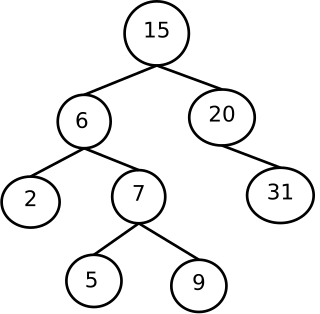 W
WIn the tree model of historical linguistics, a proto-language is a postulated and unattested once-spoken ancestral language from which a number of attested languages are believed to have descended by evolution, forming a language family. Proto-languages are usually unattested, or in some cases only partially attested. They are reconstructed by way of the comparative method.
 W
WThe Proto-Albanian language is the unattested language from which Albanian later developed. Albanian evolved from an ancient Paleo-Balkan language, traditionally thought to be Illyrian, or otherwise a totally unattested Balkan Indo-European language that was closely related to Illyrian and Messapic, which is sometimes also called Albanoid.
 W
WThe Alor–Pantar languages are a family of clearly related Papuan languages spoken on islands of the Alor archipelago near Timor in southern Indonesia. They may be most closely related to the Papuan languages of western Timor, but this is not yet clear. A more distant relationship with the Trans–New Guinea languages of the Bomberai peninsula has been proposed based on pronominal evidence, but though often cited has never been firmly established.
 W
WProto-Anatolian is the proto-language from which the ancient Anatolian languages emerged. As with almost all other proto-languages, no attested writings have been found; the language has been reconstructed by applying the comparative method to all the attested Anatolian languages as well as other Indo-European languages.
 W
WThe Anim or Fly River languages are a language family in south-central New Guinea established by Usher & Suter (2015). The names of the family derive from the Fly River and from the Proto-Anim word *anim 'people'.
 W
WArandic is a family of Australian Aboriginal languages consisting of several languages or dialect clusters, including the Arrernte group, Lower Arrernte, Pertame language and Kaytetye.
 W
WArawakan, also known as Maipurean, is a language family that developed among ancient indigenous peoples in South America. Branches migrated to Central America and the Greater Antilles in the Caribbean and the Atlantic, including what is now the Bahamas. Almost all present-day South American countries are known to have been home to speakers of Arawakan languages, the exceptions being Ecuador, Uruguay, and Chile. Maipurean may be related to other language families in a hypothetical Macro-Arawakan stock.
 W
WProto-Armenian is the earlier, unattested stage of the Armenian language which has been reconstructed by linguists. As Armenian is the only known language of its branch of the Indo-European languages, the comparative method cannot be used to reconstruct its earlier stages. Instead, a combination of internal and external reconstruction, by reconstructions of Proto-Indo-European and other branches, has allowed linguists to piece together the earlier history of Armenian.
 W
WProto-Balto-Slavic (PBS) is a reconstructed proto-language descending from Proto-Indo-European (PIE). From Proto-Balto-Slavic, the later Balto-Slavic languages are thought to have developed, composed of sub-branches Baltic and Slavic, and including modern Lithuanian, Polish, Russian and Serbo-Croatian among others.
 W
WProto-Balto-Slavic (PBS) is a reconstructed proto-language descending from Proto-Indo-European (PIE). From Proto-Balto-Slavic, the later Balto-Slavic languages are thought to have developed, composed of sub-branches Baltic and Slavic, and including modern Lithuanian, Polish, Russian and Serbo-Croatian among others.
 W
WBarbacoan is a language family spoken in Colombia and Ecuador.
 W
WThe Cariban languages are a family of languages indigenous to northeastern South America. They are widespread across northernmost South America, from the mouth of the Amazon River to the Colombian Andes, and they are also spoken in small pockets of central Brazil. The languages of the Cariban family are relatively closely related. There are about three dozen, but most are spoken only by a few hundred people. Macushi is the only language among them with numerous speakers, estimated at 30,000. The Cariban family is well known among linguists partly because one language in the family—Hixkaryana—has a default word order of object–verb–subject. Previous to their discovery of this, linguists believed that this order did not exist in any spoken natural language.
 W
WThe Proto-Celtic language, also called Common Celtic, is the ancestral proto-language of all the known Celtic languages, and a descendant of the Proto-Indo-European language. It is not directly attested in writing, but has been partially reconstructed through the comparative method. Proto-Celtic is generally believed to have been spoken between 1300 and 800 BC, after which it began to evolve into individual Celtic languages. Proto-Celtic is usually associated with the Urnfield or Hallstatt archaeological cultures. Celtic languages share common features with Italic languages that are not found in other branches of Indo-European, suggesting the possibility that an earlier Italo-Celtic linguistic unity may have existed.
 W
WThe Chapacuran languages are a nearly extinct Native American language family of South America. There are three living Chapacuran languages which are spoken in Rondônia in the southern Amazon Basin of Brazil and in northern Bolivia.
 W
WChumashan is a family of languages that were spoken on the southern California coast by Native American Chumash people, from the Coastal plains and valleys of San Luis Obispo to Malibu, neighboring inland and Transverse Ranges valleys and canyons east to bordering the San Joaquin Valley, to three adjacent Channel Islands: San Miguel, Santa Rosa, and Santa Cruz.
 W
WThe Greater Awyu or Digul River languages, known in earlier classifications with more limited scope as Awyu–Dumut (Awyu–Ndumut), are a family of perhaps a dozen Trans–New Guinea languages spoken in eastern West Papua in the region of the Digul River. Six of the languages are sufficiently attested for a basic description; it is not clear how many of the additional names may be separate languages.
 W
WProto-Germanic is the reconstructed proto-language of the Germanic branch of the Indo-European languages.
 W
WThe Proto-Greek language is the Indo-European language which was the last common ancestor of all varieties of Greek, including Mycenaean Greek, the subsequent ancient Greek dialects and, ultimately, Koine, Byzantine and Modern Greek. Proto-Greek speakers entered Greece sometime between 2200 and 1900 BCE, with the diversification into a southern and a northern group beginning by approximately 1700 BCE.
 W
WGuajiboan is a language family spoken in the Orinoco River region in eastern Colombia and southwestern Venezuela, a savanna region known as the Llanos.
 W
WProto-Indo-Aryan is the reconstructed proto-language of the Indo-Aryan languages. It is intended to reconstruct the language of the Proto-Indo-Aryans. Being descended from Proto-Indo-Iranian, it has the characteristics of a Satem language.
 W
WProto-Indo-European (PIE) is the theorized common ancestor of the Indo-European language family. Its proposed features have been derived by linguistic reconstruction from documented Indo-European languages. No direct record of Proto-Indo-European exists.
 W
WProto-Indo-Iranian or Proto-Indo-Iranic is the reconstructed proto-language of the Indo-Iranian/Indo-Iranic branch of Indo-European. Its speakers, the hypothetical Proto-Indo-Iranians, are assumed to have lived in the late 3rd millennium BC, and are often connected with the Sintashta culture of the Eurasian Steppe and the early Andronovo archaeological horizon.
 W
WProto-Iranian or Proto-Iranic is the reconstructed proto-language of the Iranian languages branch of Indo-European language family and thus the ancestor of the Iranian languages such as Pashto, Persian, Sogdian, Zazaki, Ossetian, Mazandarani, Kurdish, Talysh and others. Its speakers, the hypothetical Proto-Iranians, are assumed to have lived in the 2nd millennium BC and are usually connected with the Andronovo archaeological horizon.
 W
WThe Proto-Italic language is the ancestor of the Italic languages, most notably Latin and its descendants, the Romance languages. It is not directly attested in writing, but has been reconstructed to some degree through the comparative method. Proto-Italic descended from the earlier Proto-Indo-European language.
 W
WThe Yabutian or Jabutian languages are two similar moribund languages of southern Rondônia, Brazil, namely Arikapú (Maxubí) and Djeoromitxi (Yabutí/Jabotí). They are members of the Macro-Je language family.
 W
WThe Jê languages, or Jê–Kaingang languages, are spoken by the Jê, a group of indigenous peoples in Brazil.
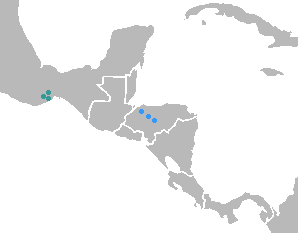 W
WJicaquean, also known as Tolan, is a small language family of Honduras. There are two attested Jicaquean languages, Tol and Western Jicaque, which Campbell (1997) reports were about as distant as English and Swedish. Only Tol survives.
 W
WThe Kamakã languages are a small family of extinct Macro-Jê languages of Bahía, northeastern Brazil. The attested Kamakã languages are:(northern) Kamakã, Kotoxó, Menién (southern) Masakará
 W
WKeresan, also Keres, is a Native American language, spoken by the Keres Pueblo people in New Mexico. Depending on the analysis, Keresan is considered a small language family or a language isolate with several dialects. The varieties of each of the seven Keres pueblos are mutually intelligible with its closest neighbors. There are significant differences between the Western and Eastern groups, which are sometimes counted as separate languages.
 W
WThe Kru languages are spoken by the Kru people from the southeast of Liberia to the west of Ivory Coast.
 W
WMacro-Jê is a medium-sized language stock in South America, mostly in Brazil but also in the Chiquitanía region in Santa Cruz, Bolivia, as well as (formerly) in small parts of Argentina and Paraguay. It is centered on the Jê language family, with most other branches currently being single languages due to recent extinctions.
 W
WProto-Mayan is the hypothetical common ancestor of the 30 living Mayan languages, as well as the Classic Maya language documented in the Maya inscriptions. While there has been some controversy with Mayan subgrouping, there has been a general agreement that the following are the main five subgroups of the family: Huastecan, Yucatecan, Cholan-Tzeltalan, Kanjobalan-Chujean, and Quichean-Mamean.
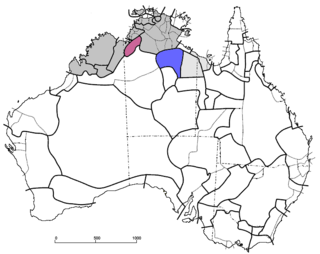 W
WThe Mirndi or Mindi languages are an Australian language family spoken in the Northern Territory of Australia. The family consists of two sub-groups, the Yirram languages and the Barkly languages some 200 km farther to the southeast, separated by the Ngumpin languages. The primary difference between the two sub-groups is that while the Yirram languages are all prefixing like other non-Pama–Nyungan languages, the Barkly languages are all suffixing like most Pama–Nyungan languages.
 W
WThe Mixtecan languages constitute a branch of the Oto-Manguean language family of Mexico. They include the Trique languages, spoken by about 24,500 people; Cuicatec, spoken by about 15,000 people; and the large expanse of Mixtec languages, spoken by about 511,000 people. The relationship between Trique, Cuicatec, and Mixtec, is an open question. Unpublished research by Terrence Kaufman in the 1980s supported grouping Cuicatec and Mixtec together.
 W
WMuskogean is a Native American language family spoken in different areas of the Southeastern United States. Though the debate concerning their interrelationships is ongoing, the Muskogean languages are generally divided into two branches, Eastern Muskogean and Western Muskogean. Typologically, Muskogean languages are agglutinative. One documented language, Apalachee, is extinct and the remaining languages are critically endangered.
 W
WThe Nambikwaran languages are a language family of half a dozen languages, all spoken in the state of Mato Grosso in Brazil. They have traditionally been considered dialects of a single language, but at least three of them are mutually unintelligible.Mamaindê (350) Nambikwara (1200) Sabanê (60)
 W
WThe Northeast Caucasian languages, also called East Caucasian or Nakh-Daghestanian languages, is a family of languages spoken in the Russian republics of Dagestan, Chechnya and Ingushetia and in Northern Azerbaijan as well as in diaspora populations in Western Europe and the Middle East. They are occasionally called Caspian, as opposed to Pontic for the Northwest Caucasian languages.
 W
WThe Nuristani languages, formerly known as Kafiri languages, are one of the three groups within the Indo-Iranian language family, alongside the much larger Indo-Aryan and Iranian groups. They have approximately 130,000 speakers primarily in eastern Afghanistan and a few adjacent valleys in Khyber Pakhtunkhwa's Chitral District, Pakistan. The region inhabited by the Nuristanis is located in the southern Hindu Kush mountains, and is drained by the Alingar River in the west, the Pech River in the center, and the Landai Sin and Kunar rivers in the east. The languages were previously often grouped with Indo-Aryan or Iranian until they were finally classified as forming a third branch in Indo-Iranian.
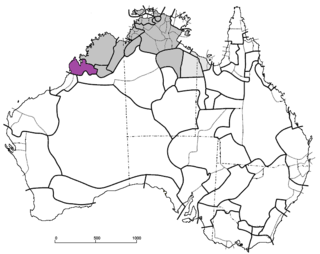 W
WThe Nyulnyulan languages are a small family of closely related Australian Aboriginal languages spoken in northern Western Australia. Most languages in this family are extinct, with only 3 extant languages, all of which are almost extinct.
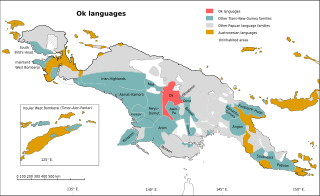 W
WThe Ok languages are a family of about a dozen related Trans–New Guinea languages spoken in a contiguous area of eastern Irian Jaya and western Papua New Guinea. The most numerous language is Ngalum, with some 20,000 speakers; the best known is probably Telefol.
 W
WThe Oto-Manguean or Otomanguean languages are a large family comprising several subfamilies of indigenous languages of the Americas. All of the Oto-Manguean languages that are now spoken are indigenous to Mexico, but the Manguean branch of the family, which is now extinct, was spoken as far south as Nicaragua and Costa Rica. Oto-Manguean is widely viewed as a proven language family. However, this status has been recently challenged.
 W
WThe Oto-Pamean languages are a branch of the Oto-Manguean languages that includes languages of the Otomi-Mazahua, Matlatzinca, and Pamean language groups all of which are spoken in central Mexico. Like all Oto-Manguean languages, the Oto-Pamean languages are tonal languages, though most have relatively simple tone systems. Unlike many Oto-Manguean languages that tend towards an isolating typology, they are morphologically complex headmarking languages with complex systems of conjugational classes both for verbs and nouns, and in the Pamean languages there are highly complex patterns of suppletion.
 W
WPanoan is a family of languages spoken in Peru, western Brazil, and Bolivia. It is possibly a branch of a larger Pano–Tacanan family.
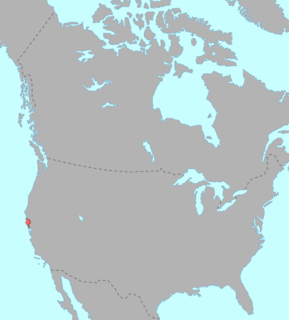 W
WThe Pomoan, or Pomo, languages are a small family of seven languages indigenous to northern California spoken by the Pomo people, whose ancestors lived in the valley of the Russian River and the Clear Lake basin. Four languages are extinct, and all surviving languages except Kashaya have fewer than ten speakers.
 W
WPurian is a pair of extinct languages of eastern Brazil:Purí Coroado Puri
 W
WThe Ron, Ronic or Ron–Fyer languages, group A.4 of the West Chadic branch of the Afro-Asiatic language family, are spoken in Plateau State, north-central Nigeria.
 W
WProto-Slavic is the unattested, reconstructed proto-language of all the Slavic languages. It represents Slavic speech approximately from the 2nd millennium B.C. through the 6th century A.D. As with most other proto-languages, no attested writings have been found; scholars have reconstructed the language by applying the comparative method to all the attested Slavic languages and by taking into account other Indo-European languages.
 W
WThe Songhay, Songhai or Ayneha languages are a group of closely related languages/dialects centred on the middle stretches of the Niger River in the West African countries of Mali, Niger, Benin, Burkina Faso and Nigeria. In particular, they are spoken in the cities of Timbuktu, Niamey and Gao. They have been widely used as a lingua franca in that region ever since the era of the Songhai Empire. In Mali, the government has officially adopted the dialect of Gao as the dialect to be used as a medium of primary education.
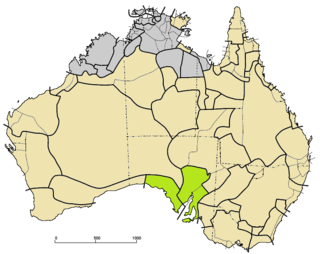 W
WThe Yura or Thura-Yura languages are a group of Australian Aboriginal languages surrounding Spencer Gulf and Gulf St Vincent in South Australia, that comprise a genetic language family of the Pama–Nyungan family.
 W
WProto-Tocharian, also spelled Proto-Tokharian, is the reconstructed proto-language of the extinct Tocharian branch of the Indo-European languages.
 W
WThe Trans–São Francisco languages are a proposed grouping of languages within Macro-Jê. They consist of the Krenák, Maxakalían, and possibly also the Kamakã families. The Trans–São Francisco group was originally proposed and demonstrated by Nikulin and Silva (2020) under the name of Maxakalí-Krenák.
 W
WTupi–Guarani is the name of the most widely distributed subfamily of the Tupian languages of South America. It includes fifty languages, including the best-known languages of the family, Guarani and Old Tupi.
 W
WThe North Bauchi languages are a branch of West Chadic languages that are spoken in Bauchi State, northern Nigeria.
 W
WYokuts, formerly known as Mariposa, is an endangered language spoken in the interior of Northern and Central California in and around the San Joaquin Valley by the Yokuts people. The speakers of Yokuts were severely affected by disease, missionaries, and the Gold Rush. While descendants of Yokuts speakers currently number in the thousands, most of the constituent dialects are now extinct.
 W
WThe Yuman–Cochimí languages are a family of languages spoken in Baja California, northern Sonora, southern California, and western Arizona. Cochimí is no longer spoken as of the late 18th century, and most other Yuman languages are threatened.
 W
WZaparoan is an endangered language family of Peru and Ecuador with fewer than 100 speakers. Zaparoan speakers seem to have been very numerous before the arrival of the Europeans. However, their groups have been decimated by imported diseases and warfare, and only a handful of them have survived.